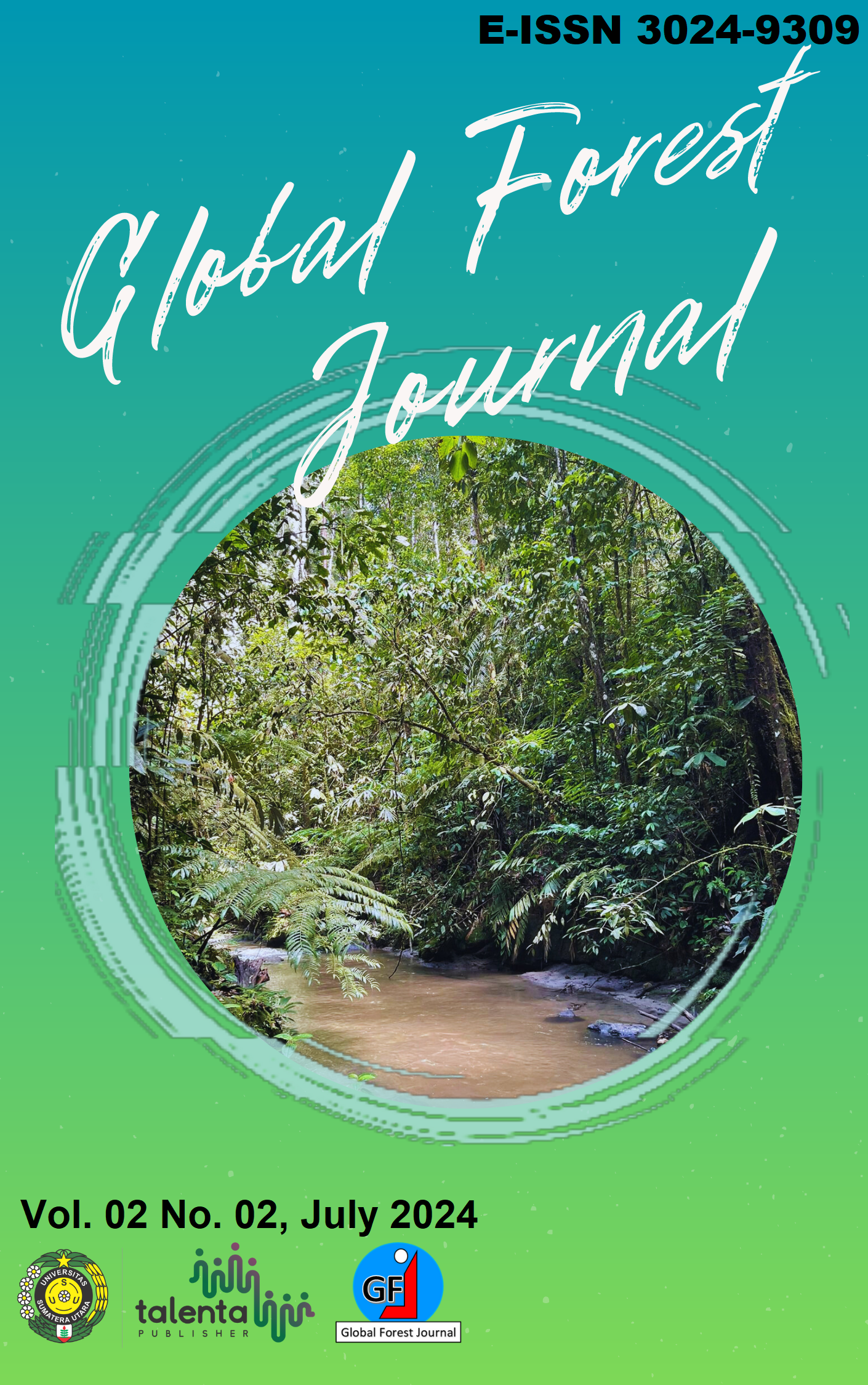Optimizing calliandra (Calliandra calothyrsus) biomass pellets: Impact of particle size and bark composition
DOI:
https://doi.org/10.32734/gfj.v2i02.15735Keywords:
Biomass, Caliandra, PelletAbstract
Calliandra biomass pellets offer a promising alternative energy source to replace fossil fuels. Typically, these pellets are produced by directly processing the stem and bark of the calliandra (Calliandra calothyrsus) plant without separation, aiming for manufacturing efficiency. This study investigated the quality differences between calliandra biomass pellets with and without bark and varying particle sizes. Particle sizes used were 20 mesh, 40 mesh, and 60 mesh. The pellets were made using a 12 mm diameter biomass pellet mold and a manual hydraulic press with a pressure of 3 tons. Characterization involved assessing proximate analysis, calorific value, physical and mechanical properties, and Fourier Transform Infrared analysis. The test results were compared with biomass pellet standards from Indonesia, Japan, Korea, and Germany. Results indicate that bark affects several properties, with higher ash content observed in pellets with bark due to the higher mineral content in bark. Volatile matter decreases with finer particle size, influencing combustion rate. Moisture content is higher in pellets with bark, impacting combustion efficiency and smoke production. Fixed carbon values are influenced by moisture and volatile matter content. Calorific values are generally higher in pellets without bark and smaller particle sizes. Density and compressive strength increase with decreasing particle size. FTIR analysis reveals differences in functional groups between pellets with and without bark, indicating variations in chemical composition. Overall, this research provides insight into the potential of calliandra biomass pellets with bark and without bark along with particle size as a renewable energy source.
Downloads
Downloads
Published
Issue
Section
License
Copyright (c) 2024 Global Forest Journal

This work is licensed under a Creative Commons Attribution-ShareAlike 4.0 International License.












